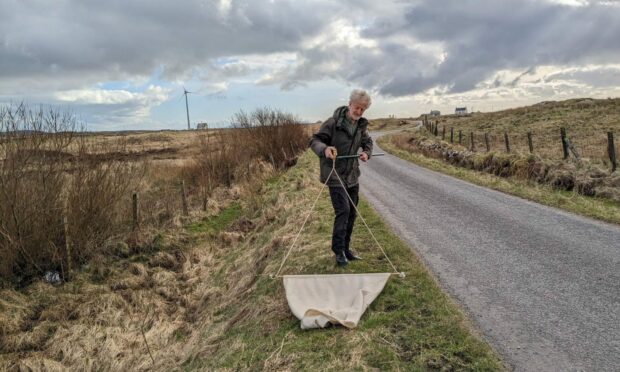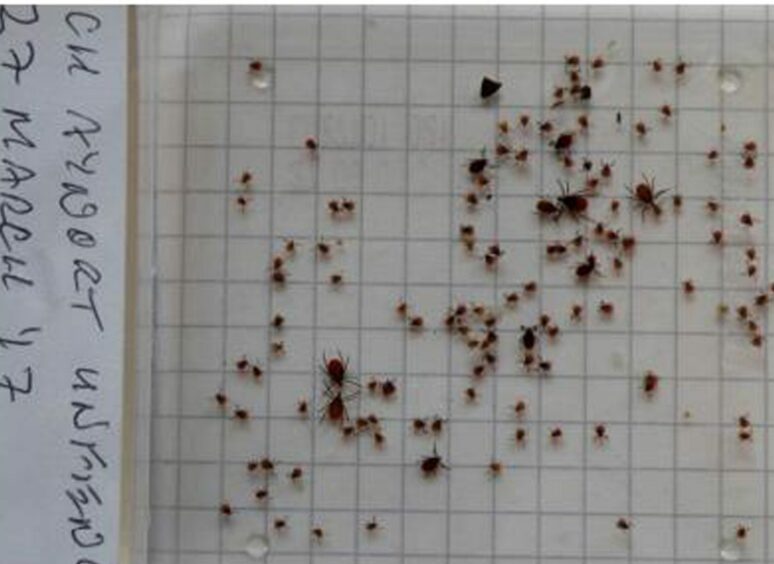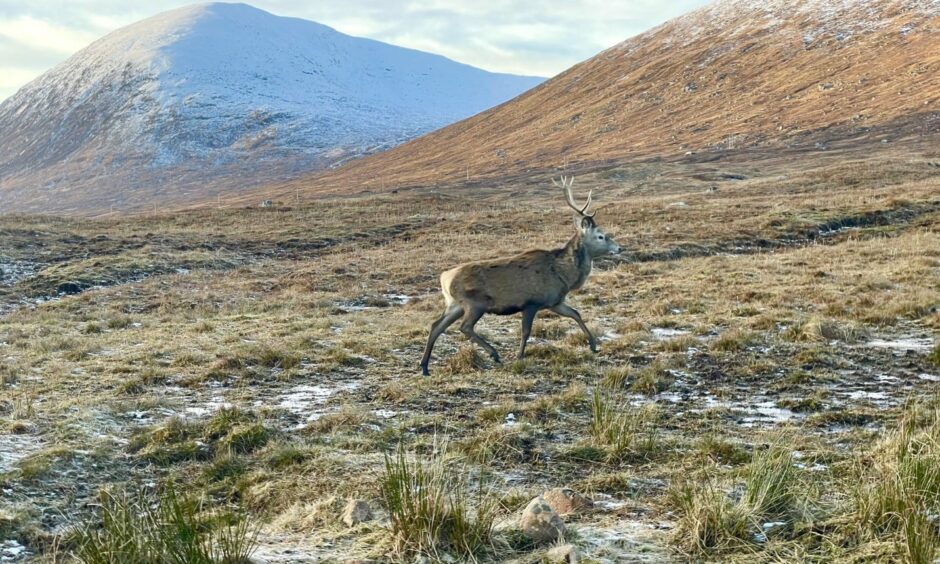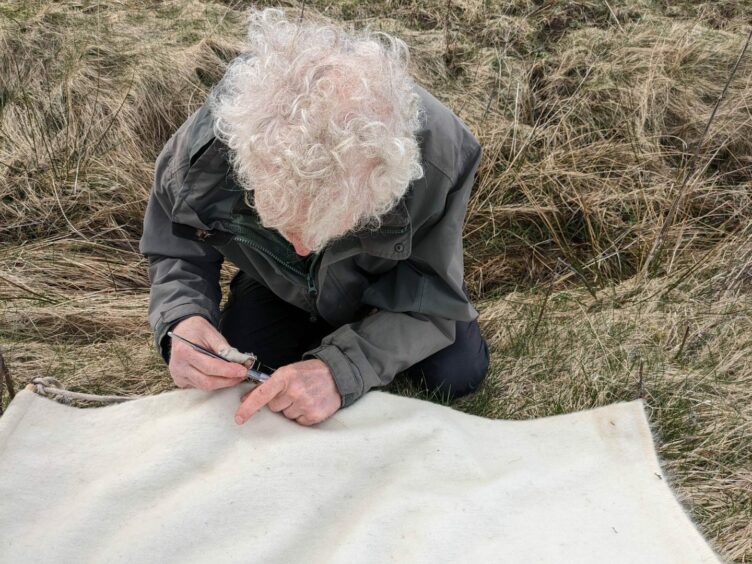As a vet, Graham Charlesworth had treated many animals for tick-borne illnesses before.
But, when he first moved to Uist, the number of cases he found shocked him.
“I thought, ‘Wow, there’s so much of this’,” says Mr Charlesworth, who has since retired.
“I blamed climate change at first,” he says. Ticks prefer warmer weather, and increasing temperatures have no doubt helped to boost their numbers in the islands.
But temperatures are rising everywhere – so why does Uist have the highest rate of Lyme disease in Scotland?
Even among other islands in the Outer Hebrides, statistics from NHS Western Isles show that Uist’s rate of Lyme disease infection is the highest by far.
There was “no information” on Uist’s unique problem, says Mr Charlesworth. “So I thought I’d better go out and find it.”
Since then, researching ticks and tick-borne illnesses has been Mr Charlesworth’s passion. His findings show that the problem of ticks in Uist is only growing.
After carrying out one survey of crofters in 2007, a second in 2014 showed that people are reporting finding more ticks on themselves – and seeing deer spread further over the island.
Deer, who provide a food source for ticks as well as spreading them while roaming, have been blamed for the sky-high numbers of ticks in Uist.
‘The deer need to be culled and they will be culled’
They were introduced to the area in the 1970s for sport, but their population has increased rapidly.
Last month, members of South Uist’s community-owned estate voted against eradicating the deer.
But Stòras Uibhist CEO Darren Taylor said he agreed there are “too many deer” in South Uist.
“The deer need to be culled and they will be culled.”
All large mammals can spread ticks, and the difference they make to the numbers can be huge.
For years, Mr Charlesworth has been carrying out tick drags all over Uist.
During a tick drag, a large piece of cloth is dragged through the grass to simulate a passing animal. Any ticks that have latched on to the cloth are then collected and counted.
From seven to 557 ticks
Wherever Mr Charlesworth goes, he finds ticks. But it was a series of drags at Loch Eynort in South Uist that left him “shocked”.
The only difference in the two areas he dragged was that large mammals couldn’t access the fenced section.
Over a year, he found only seven ticks in that area – but 557 where animals could roam.
Mr Charlesworth says that, on balance, he supports those in Uist looking to remove the deer completely. But he wants his research to help everybody understand the problem, no matter their view.
It’s important that both sides of the debate “make an informed decision”, he says.
More local reporting from the Western Isles:
- ‘Total dereliction of duty’: One homeowner’s months-long journey to get a meter fitted in the Outer Hebrides
- Finding a home in the Hebrides: The success story of an island graphic design studio
- ‘I realised I wasn’t the only weather nerd around’: How one man grew a weather-watching community of thousands in the Western Isles




Conversation